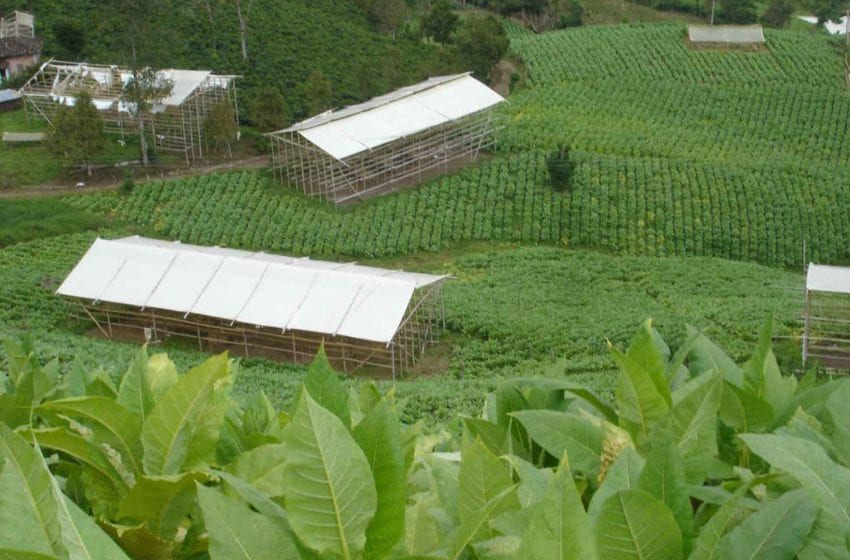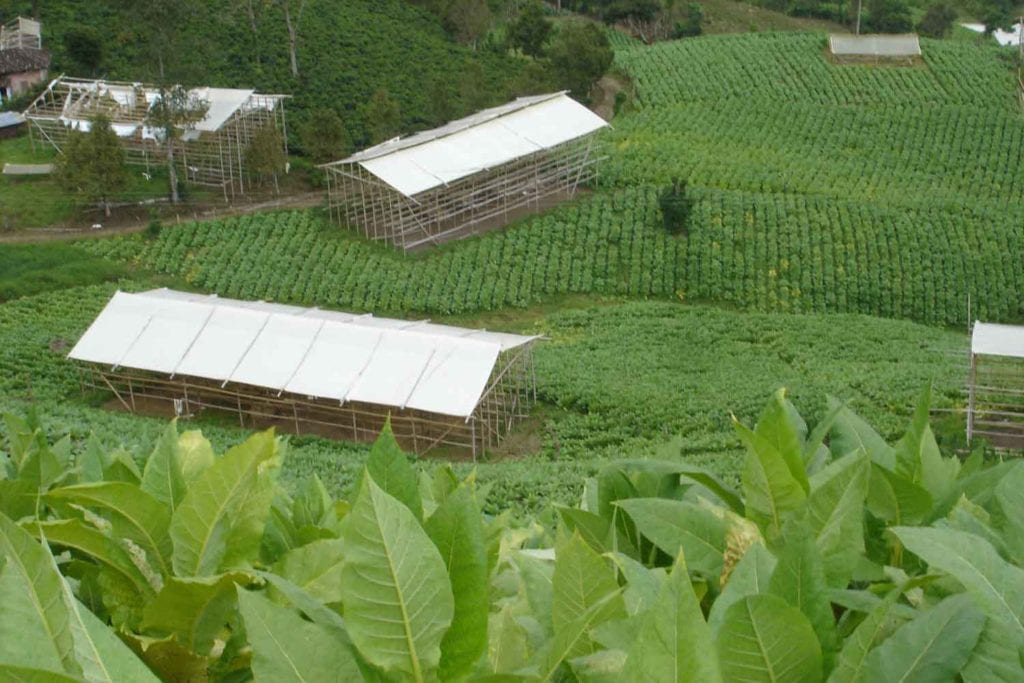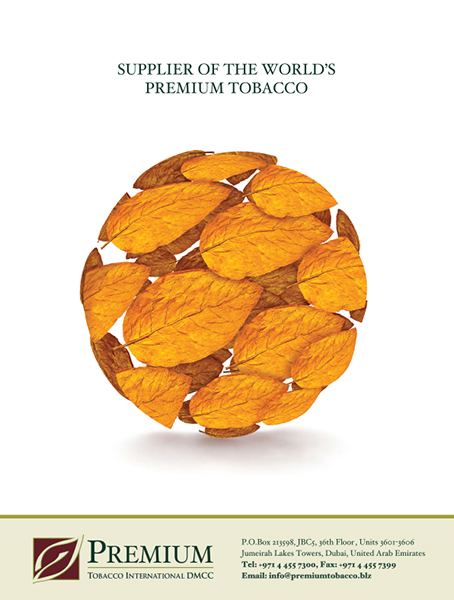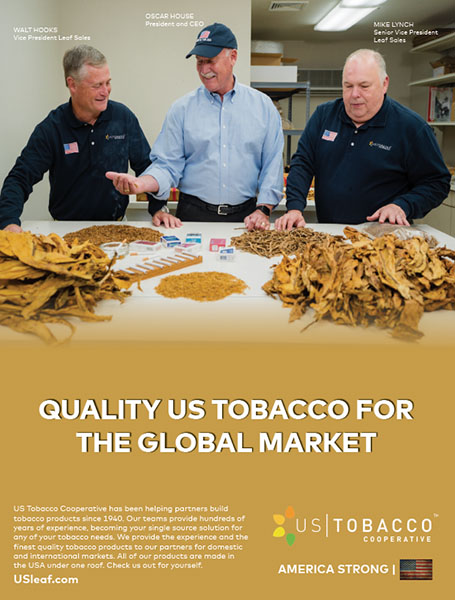Blueprint for Exit
- Also in TR Leaf Print Edition
- March 1, 2021
- 0
- 2
- 9 minutes read


Following the exit of two leading cigarette manufacturers, Colombian tobacco farmers had to find alternative livelihoods overnight. Their experience offers lessons for growers elsewhere.
By Stefanie Rossel
From smallholder tobacco farming to organized large-scale tobacco cultivation to alternative crops in a short time—Colombia’s leaf tobacco sector has experienced a remarkable development in the past 16 years. Its most recent change toward farmer livelihoods independent of tobacco might become a blueprint for other leaf origins facing declining demand for tobacco.
The takeover of Colombia’s domestic tobacco industry by multinationals was a turning point for the country’s leaf sector. Philip Morris International (PMI) acquired Coltabaco in 2005, and British American Tobacco (BAT) bought Protabaco in 2011.
“The technological package that had been implemented by the national companies before was very different from the one brought by the multinationals, and this meant radical adaptations for growers,” explains Heliodoro Campos Castillo, founder and general secretary of the National Tobacco Fund in Colombia (Fedetabaco).
“To give some examples, tobacco farming in Colombia, like almost everywhere in the world, has always been a family business, with everyone from granddads to youngsters participating actively. With multinationals’ child labor policies, this was ended and translated into a reduction in areas cultivated. Other measures that brought about a hard adaptation for growers were the security procedures that did not exist before. Growers accepted them as part of the evolution needed in the sector to improve agricultural practices and did their best to adapt to them. However, these were abrupt changes with very little time for implementation, and the sector suffered with them.”
Years before the multinationals entered the market, Fedetabaco initiated an investment package of $64 million in Colombia’s tobacco sector, which was co-financed by municipalities, the tobacco industry and institutions and stretched over almost 25 years.
“Fedetabaco understood the challenges ahead and went beyond the improvements in production to better growers’ livelihoods through different sustainable programs, such as rainfall water collection and reservoirs, housing projects, improvement of curing methods through modernization and, most importantly, promoting sustainability through diversification to grant growers food security and endow them with resources to cover their basic consumption needs,” says Campos Castillo.
“The improvement of the production system as a whole was an important factor to contribute to this self-sufficient strategy. We are working with the International Tobacco Growers’ Association (ITGA) to make sure the example of Colombia will help growers in other parts of the world.”

Local crop alternatives
Tobacco cultivation in Colombia dates to the 18th century, but the plant plays a minor role in the country’s agriculture. According to the World Health Organization, only 0.03 percent of Colombia’s agricultural land was devoted to tobacco cultivation in 2014. The area used for tobacco cultivation has decreased drastically in the past decade, from 9,589 ha in 2011 to 3,550 ha in 2019, notes Fedetabaco. In line with global trends, annual cigarette consumption in the country declined from 18.4 billion units a year in 2010 to 12.2 billion pieces in 2019, according to USDA estimates. With a market share of 51.4 percent in 2019, PMI contract-purchased about half of the domestic leaf tobacco crop, which corresponded to a planted area of 1,850 ha per year, from 2,300 farmers. BAT, which held the remaining 48.6 percent of the market in 2019, bought tobacco grown on 1,300 ha.
However, PMI closed its manufacturing operations in Colombia in 2019, citing a rise in contraband and a global trend away from tobacco products. One year later, BAT followed suit.

The two companies’ sudden withdrawal left farmers with little time to find viable alternative crops. It directly affected around 2,000 families and 9,000 people whose main source of income was tobacco, says Campos Castillo.
“Fedetabaco immediately took action to try to mitigate this negative impact in these people’s livelihoods,” he says. “Working closely with the ministry of agriculture and all the sector’s national organizations and institutions, we were able to build up a strategic reconversion program based on a thorough analysis of the situation.
“As the priority line of action, we took into account the experience and expertise of the farmers and the important contribution their knowledge could bring to the program as well as the ecological and agricultural characteristics to make sure we will act on the right location with the right crop with minimum waste.
“This program includes maize, yuca and other crops well known by farmers. The investment will cover 3,500 hectares, and its estimated cost is around $10 million. So far, as a shock plan, we have been able to advance, in coordination with the ministry of agriculture, $900,000 to provide seeds and $400,000 to plant maize, but we reached out to ITGA because this will only cover a very small part of the problem.”

Cannabis pilot
To help their farmers find alternative crops after their exit, PMI and BAT commissioned studies from two national nongovernmental organizations (NGOs). While Proterritorio finished its study last year, the Fundes research will be concluded this May. “We hope [the results] will add value to solve the problem,” says Campos Castillo. “Nevertheless, growers feel confident in the program developed by Fedetabaco with the ministry of agriculture, mainly because it has identified viable crops well known by them, such as yuca, Tahiti lemon and maize. We tend to think that there is a similar line of strategy between what we are proposing from Fedetabaco and the ministry of agriculture and the NGOs hired by the companies, but we will have to wait and see when the figures are out.”
Of the 18 departments that historically grew tobacco, only two will continue. One of them, in Colombia’s north, produces a dark cigar tobacco exclusively for export. The other, in Santander, cultivates Criollo, a tobacco used primarily for domestic cigars.
Cannabis, too, could become an alternative for tobacco growers. Colombia legalized the growth, sale and smoking of medicinal cannabis in 2015. After Coltobaco’s closure, Fedetabaco immediately started exploring the potential of cannabis for medicinal, nonpsychoactive purposes. “We are carefully handling this pilot project and expect to have the result of the analysis in terms of cost of production, productivity and quality by the end of 2021.” It is an exciting project because cannabis is cultivated in small areas of around 1,000 square meters to 2,000 square meters—a scale that is familiar to smallholder tobacco farmers. What’s more, the soil and weather conditions in the target regions appear to be suitable for cannabis cultivation.
Campos Castillo insists that his organization has not stopped working with the government trying to find solutions for tobacco farmers since the departure of PMI and BAT. “The government of Colombia cannot commit to granting the total amount of the funding. Tobacco is a small agriculture share in Colombia, and investment is needed in other rural commodities. Fedetabaco is experienced and has been developing programs for more than 30 years in rural areas in Colombia, so a holistic approach would be to gather all the resources available from companies, [the] government, institutions and our global platform, ITGA, all working together with a single purpose to safeguard the livelihood of these 2,000 families. We remain hopeful that this will happen in the near future.”
The author would like to thank Mercedes Vazquez for her assistance with this article.

